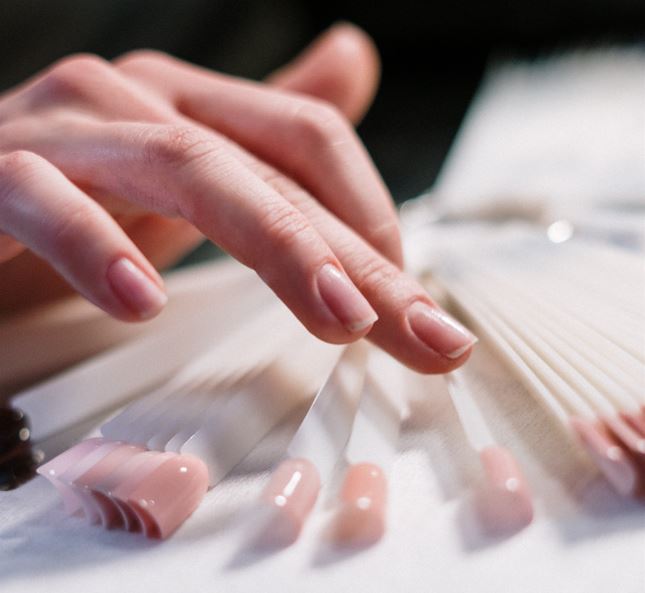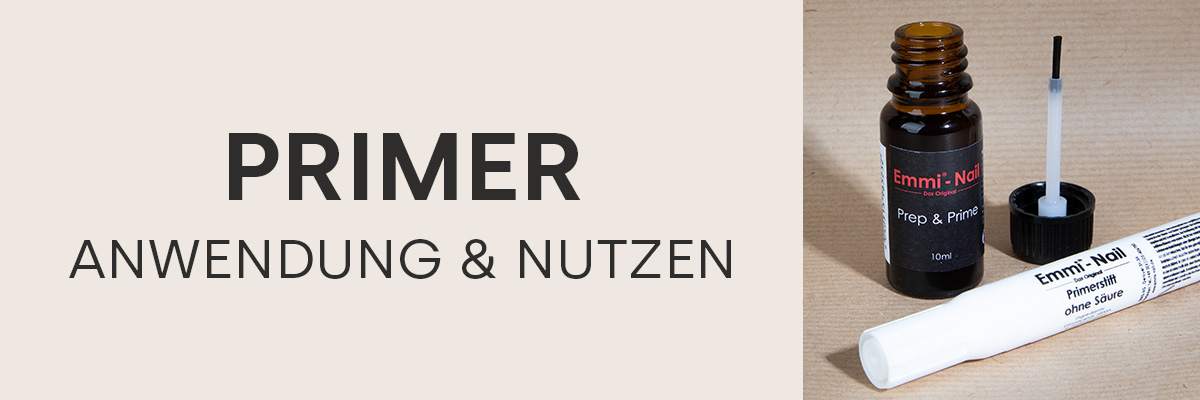Primer: application and benefits
Why do I need a primer?
First of all, you need to understand how the gel or emmi Shellac adheres to the natural nail. In nail design, everything depends on the right adhesion so that the modeling does not show unsightly lifting after a few days. The molecules of the gel tend to bond with the smooth, greasy nail plate with difficulty.
The nail surface must therefore be degreased and slightly roughened. This works best with a nail buffer. You can also use a dehydrator to remove water from the nail and thus ensure better adhesion.
It is also very important to remove the cuticles from the edges of the nail for optimum adhesion of the gel nails. Otherwise, lifting may occur in isolated areas. A rosewood stick or a Pro Pusher is suitable for this. The nail plate is now prepared and the nail surface is enlarged by roughening.
The gel molecules now have a large surface area to adhere to. The priming gel is therefore best suited for the first layer. It is massaged into the nail plate in small circles with a short brush and then hardened. The resulting sweat layer provides the ideal basis for the build-up layer. In special cases, the priming gel does not adhere to the natural nail on its own. Primers are available in different variants and sizes for this purpose.
How do I use primer?
Apply the primer to the natural nail after buffing. It dries in the air and leaves a slightly sticky layer on which the base gel adheres even better. We recommend first testing with a primer pen without acid to see if the lifting is reduced. If this is not the case, you can also choose the primer pen with acid. It slightly etches the nail plate to create the largest possible surface for the priming gel. It should only be used in the hands of professionals.
Primer with or without acid?
The methacrylic acid in the primer ensures that the scales of the nail plate lift slightly and thus form a better bond with the next layer. However, not everyone can tolerate this ingredient. Acidic primer also smells stronger and can sting a little when applied to sensitive nails. Everyone has to decide for themselves or for their studio customers which bonding agent is the better choice. Primer with or without acid can be used under both gel and acrylic powder.
Acidic primer can normally be used for all gels. With acid-free primer, a kind of acrylic layer forms on the nail. If an acidic gel is then used, it may be possible to remove it again in one layer after it has hardened. If you prefer to use an acid-free primer, make sure you also apply acid-free gels afterwards. If in doubt, simply try the combination of acid-free primer and acidic gel.


Do I still need primer gel?
In principle, the use of primer may be sufficient. However, if your nails are rather greasy or if you have adhesion problems due to hormonal fluctuations, you should also use a priming gel. Using a special priming gel brush, it is worked into the nail in a thin, circular motion and hardened.
The remaining sticky film, also known as the inhibition layer, serves as an "adhesive" for the build-up layer. If you work with a so-called all-in-one or single-phase gel, you can continue directly with this gel, as it combines primer, build-up and sealant in one product.
With training for perfect adhesion
"No master has ever fallen from the sky", as the saying goes. But if you have put hours of effort into nail modeling, it is very frustrating when all the work comes off the nail after a few days. We therefore recommend our basic training course for all basic nail design techniques and information. And for those who are already a little more experienced, our Start Up Comfort is the perfect place to start. Book an appointment now.
How do I remove cuticles correctly?
Cuticles grow around every fingernail and of course on toenails too. For some, they are more pronounced on the feet, for others on the hands. Calloused and excess cuticles in particular do not look nice and lead to the question: How can cuticles be removed? There are many options, but not all of them are suitable for home use. Firm cuticles in particular must be removed very carefully, as otherwise torn corners and inflammation can quickly occur.





